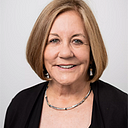How IoT for Senior Care Promotes Autonomy and Social Inclusion
Healthcare IoT can help older people become less isolated by providing them with multi-level connectivity and a number of socialization channels.
One of the most important milestones to achieve in our aging world is to ensure that older adults get connectivity, health assistance, and support regardless of their residence and family setting.
Senior Quality of Life
It is crucial that seniors maintain their
desired quality of life without 24/7 supervision.
We believe that one of the straightest paths towards personalizing and balancing elderly health assistance without sinking into extreme measures is harnessing technology, specifically, healthcare IoT or the Internet of Things.
Expected to reach a whopping $534.3 billion by 2025, the global healthcare IoT market connects mobile apps, voice-aided assistants, medical and fitness wearables, and embedded sensors into a patient-centric network.
The Internet of Things in healthcare already taps into different care consumer groups, from helping professional athletes reach their peak performance to assisting in the prevention of infectious diseases.
Speaking of the older generation, IoT can create a gateway to social inclusion. In this article, we look into the promise of introducing IoT into senior care. Figuring out this technology can help the elderly become more independent and active without health-related setbacks.
Creating Hands-On Care Opportunities
The risk of developing chronic non-communicable diseases, including COPD, hypertension, cardiovascular disease, and diabetes, increases with age. Some of these diseases may require surgeries or lead to complications resulting in disabilities.
Healthcare IoT can address different combinations of an older adult’s medical care needs, helping doctors prevent acuities and balance treatment.
Benefits From Connected Devices
Depending on their health status, the older person can benefit from such connected devices as:
- Heart and blood pressure monitors
- Glucometers, continuous glucose monitoring (CGM) systems, and pumps
- Smart wearables for tracking sleep, mood, breath, oxygen levels, activity, temperature, etc.
- Hearing aid, smart canes, wheelchairs, etc.
- Smart implants, such as pacemakers, orthopedic implants, and glucose sensors
Each device can be accompanied by a specific mobile app or transfer data into a consolidated mHealth application for a fuller picture.
The data on vitals can be used for further analysis to create health trends. Data can assist in setting personal goals for activity, manage chronic conditions, and customize patient alerts and notifications for their care team members and family.
Overall, the system of connected medical devices gently refocuses the senior’s priorities from constant worrying and repeated measuring to actually living.
Boosting Social Inclusion
Social inclusion is challenging for the older population, as they may occasionally experience ageism when visiting their doctor, communicating with a family, or just going about their business.
According to Alana Officer, WHO Coordinator of Ageing and Life Course, ageism can take many forms. These include these:
- “Depicting older people as frail, dependent, and out of touch in the media
- Discriminatory practices such as health-care rationing by age
- Institutional policies such as mandatory retirement at a certain age.”
It’s also no secret that seniors tend to feel isolated and neglected, especially when they have specific care and assistance needs.
Healthcare IoT can help reduce ageism. It can also assist older people with becoming less isolated by providing them with multi-level connectivity and a number of socialization channels. For instance:
- Communication apps for smartwatches and bands to connect neighbors and create affinity groups
- Companion robots and robotic pets (ElliQ, Buddy, PARO, etc.) to play music, cuddle, and interact
- VR sets for pain management, boosting physical activity levels, and entertainment (such as playing co-op or solo games)
- Telehealth systems for getting physician consultations and follow-ups at home
- Health monitoring devices, sending notifications and alerts to caregivers and family members about the senior’s health status changes
Having access to several channels at once, seniors can feel involved in different activities both indoors and outdoors.
They can train cognitive skills and have fun with games, meet new people, and interact with their loved ones or caregivers in a comfortable way while excelling at harnessing breakthrough technology.
Seniors in the World of Technology
When the older population starts using advanced tech as a basic tool to meet their needs in communication and care, they will be able to feel on the same page with the youth.
Being exposed to numerous ways of connecting to the world around them, they can get out there more, not falling into isolation or depression, starting to pursue new interests, maybe volunteering or taking on jobs, and not letting the health-related limitations hinder their social life.
IoT for Seniors Must Be User-Centered
Let Actual Users Try the Apps and Devices
If developers have no idea how the intended system will be used in the real world by real elders, they won’t be able to deliver a convenient solution with intuitive navigation.
As a result, senior users can struggle with
- complex installation
- tiny fonts
- crazy colors
- inconveniently placed buttons on super-sensitive touchscreens
- obscure titles
- wrong wording, etc.
This is how an up-and-coming system turns into a flop.
To ensure high adoption, mobile app developers should hand their solutions to actual users and let them try the devices and connected apps in daily life for at least a month.
In this way, all interface issues, bugs, and problematic features can be found and fixed. We also presume that more mature specialists can be part of development teams, building the system with personal experience in hand.
More Senior Related Articles:
Originally published at thedoctorweighsin.com on February 22, 2019.
